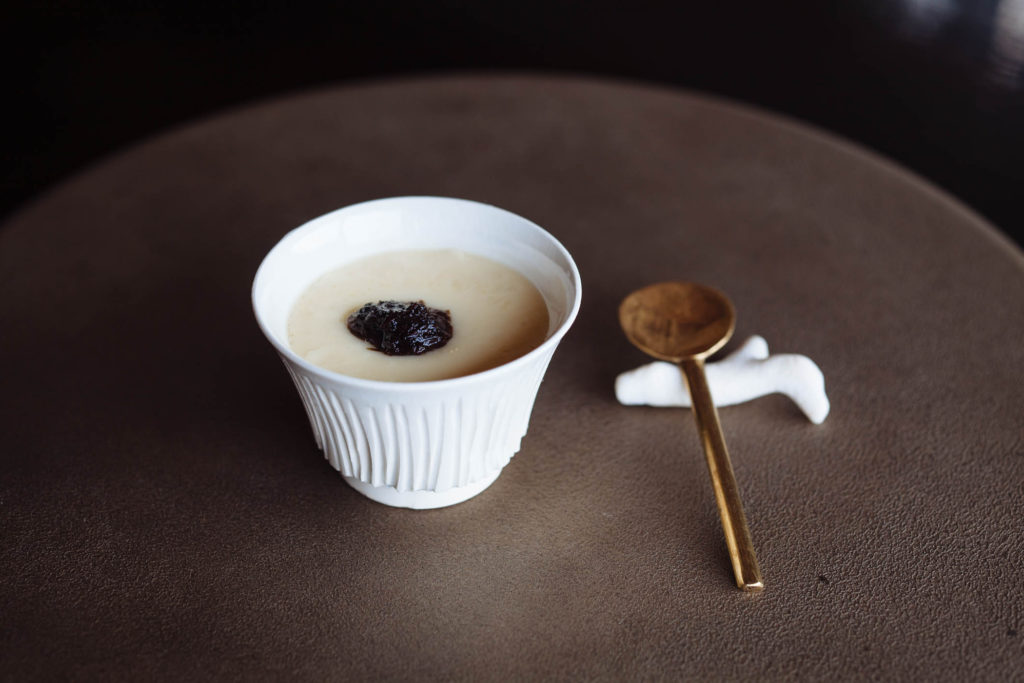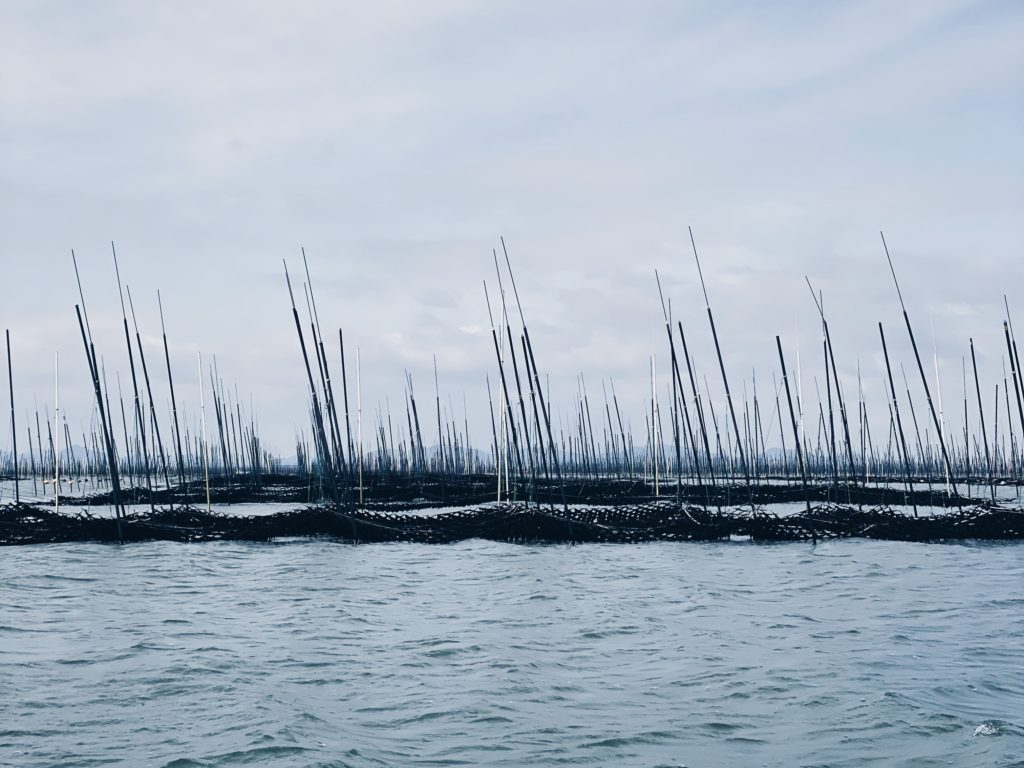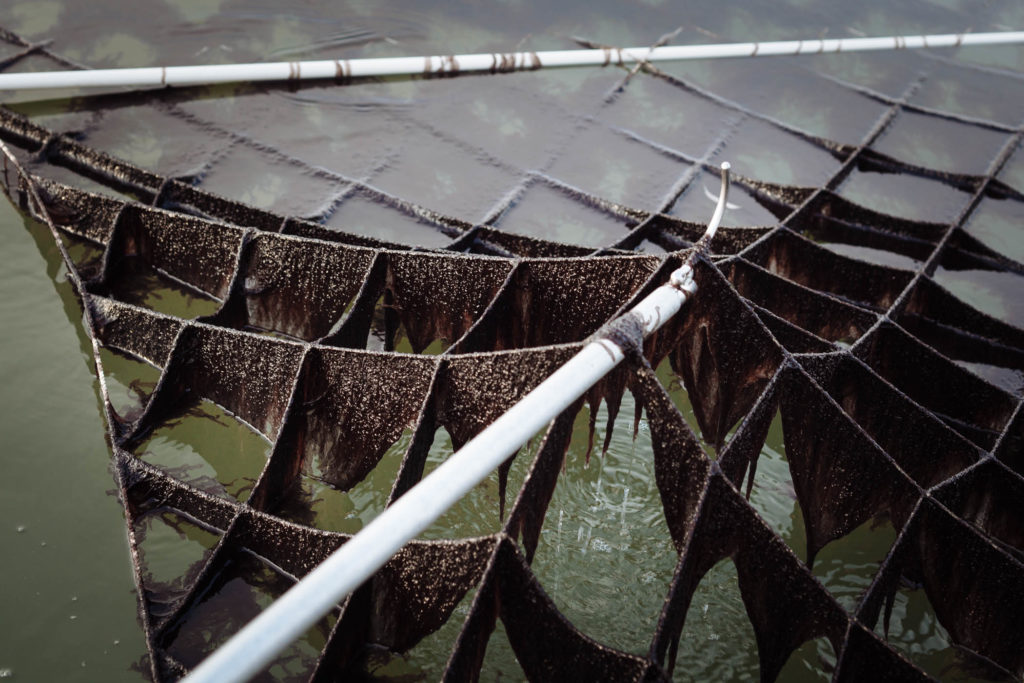
This morning I woke to the gentle patter of a steady rainfall. The sun struggled to impel its light through a sky quilted in dark clouds. The air is slowly but steadily warming and what once fell as snow now turns to rain. It saturates the earth. As the thawing soil drinks it in, moisture seeps down and tickles the buds and sprouts slumbering below. Soon they will wake, yawn, and stretch towards the lengthening days above.

The skies were clear for our journey out to Saga’s nori growing region last week, our special outing for First Spring. We met up with our guide, Tsunehiro Kawahara of Sanpuku Nori, a distributor with a sommelier’s palate for nori. We boarded an aqua-farmer’s boat and motored down the final stretch of the Chikugo river, the largest of over 100 rivers that feed essential nutrients from the mountains to nori growing on some 200,000 nets in the Ariake Sea. As the riverbanks fell away and the view opened, a black line appeared on the horizon. We sped closer and closer to a network of countless vertical poles. Every October some 2 million of these 10 meter fiberglas poles are planted in the sea floor by hand, to be removed again in March. Between them stretch 200,000 nets upon which nori grows. It’s an absolute marvel to behold, a scene that few can fathom. Nori is a common flavor in Japan and receives attention widely outside of Japan, but few have ever considered where it actually comes from. Sixty percent of it comes from right here in the Ariake Sea.
The first winter nori harvest offers us nama nori, fresh raw nori. It is a fleeting, seasonal, uncommon flavor that before refrigeration was a delicacy enjoyed only by the aqua farmers tending their nori nets. It is seaweed sashimi. The softest, most flavorful first growth is gathered from the nets, washed, and immediately frozen. It is the purest, rawest, most acute experience of nori. The flavor is predictably briny, the texture both pliant and crisp. It pairs well with ponzu, a citrus and soy based sauce, and with eggs, but must be used sparingly as supplies are especially limited.
Some seasonal flavors linger, vegetables with long growing seasons or fish that dally in local waters, but nama nori passes swiftly and punctuates the shift from winter into spring.
